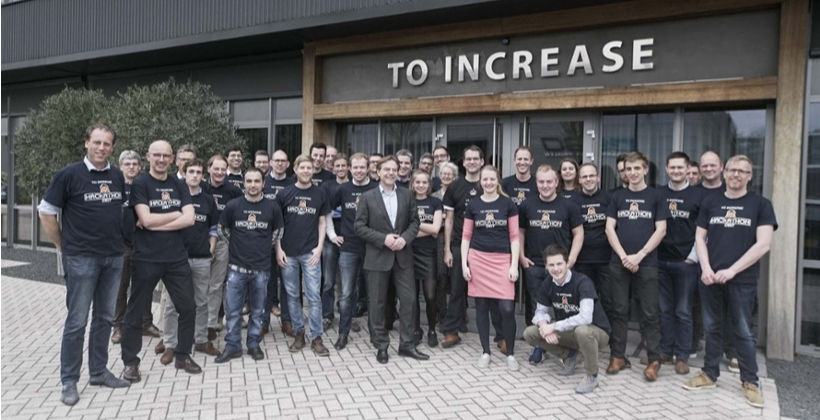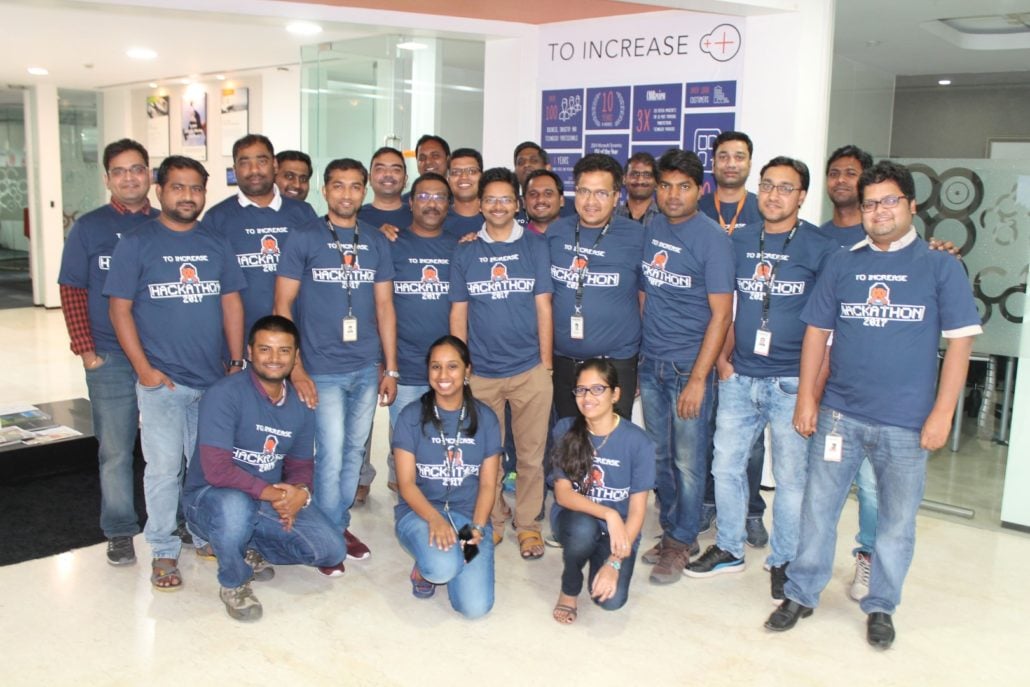 Hackathon sprints from idea to customer-ready product in 11 hours
Hackathon sprints from idea to customer-ready product in 11 hours
From our customers we hear over and over that one of the most powerful distinctions for almost any company is its ability to innovate. At To-Increase, we see ourselves as innovators in our industry, developing and creating solutions that make a positive difference in the success of people and organizations.
But – do we still have what it takes? Can we bring together our entire team to efficiently create a completely new solution that meets an unfilled business need? Can we practice the digital leadership that we would like to enable for other companies? Are we truly on top of our game?
We decided to put ourselves to the test. Our hackathon would take us all the way from a solution concept to a finished product, ready for customer deployment.
Owning the customer perspective
To help us zero in on customers, we listened to a talk by Gertjo Tigelaar, an expert in customer experience and software and industrial design. Many of the ideas he shared are discussed in an excellent book, ‘Value Proposition Design: How to Create Products and Services Customers Want’.
Tigelaar emphasized that knowing our customers is a necessity for us, no matter how many partners, resellers, and other companies mediate between us and the actual users of our solutions in our complex value chain. He showed us an intuitive, structured approach to assessing and mapping the business environment of a customer company.
This discipline uses a set of tools and practices to document your understanding of customers and position your organization to address their issues. You take an inventory of the revenue streams, value propositions, industry forces, market trends, resources, and key relationships that define a company. You identify customer pains that need resolution and the gains you might bring about for the customer.
When you get more specific, you might, for instance, model a day in the life of a customer, figure out which business roles you can help, and list opportunities you see. Then you shape a solid value proposition. After that, you’re on to best practices for prototyping and testing. Tigelaar left at noon. We were anxious to get going.
From Iceland to India, the team collaborates on a new software product
We started the hackathon by setting ground rules for communications and working together effectively. After all, our teams comprised people across the globe – at headquarters in Veenendaal, in India, Iceland, the U.S., and other locations. We were going to create a product from scratch, together with the pricing and licensing structure and go-to-market strategy.
We called our new solution the Smart Communication Assistant. It would monitor a user’s emails, chats, and blog posts; analyze their content and emotional tone; store its findings in an analytics database; and provide insight into content, communication patterns, trending, and performance. Customers could use the solution to improve their communications, understand their own customers better, and broadcast stronger, more positive messages about and from their company.
We used SCRUM methodology, proceeding in five sprints. Each of these ended with a 10-minute standup meeting to discuss accomplishments, things left to do, and obstacles. The initial ideation sprint defined the value proposition, defined the solution concept, provided a market assessment, reviewed possibly useful technology tools, identified usage scenarios, and created an architectural blueprint.
Teams mostly went their own way in the following production sprints, although they kept in close touch to make sure they were in sync. Developers built the product. Marketers, finance managers, channel managers, IP and legal experts, and others created a huge amount of deliverables: a website, marketing collateral, a pricing structure, presentations, scenario-based tutorials, a video demo, and much more.
In the last sprint, we prepared our product release and finalized all other deliverables.
Innovation reaches the goal
Our solution, the Smart Communication Assistant, consists of four main components: A service assesses inbound and outbound communications. A mobile app shows your communication performance according to KPIs. A web app provides insight into the company’s overall performance. Standard integrations connect with your email, chat, and blogging tools.
I don’t think I’ve ever seen so many talented people work with such concentration. We finished early, before 11 p.m. After a smooth solution demo, it was time to celebrate.
What did we learn?
We have the power to innovate. As a unified team, we can come together and get an amazing amount of work done in a short time, with excellent results.
People were tired. People were thrilled. They are looking forward to doing it again. Check out the video: To-Increase Hackathon video





